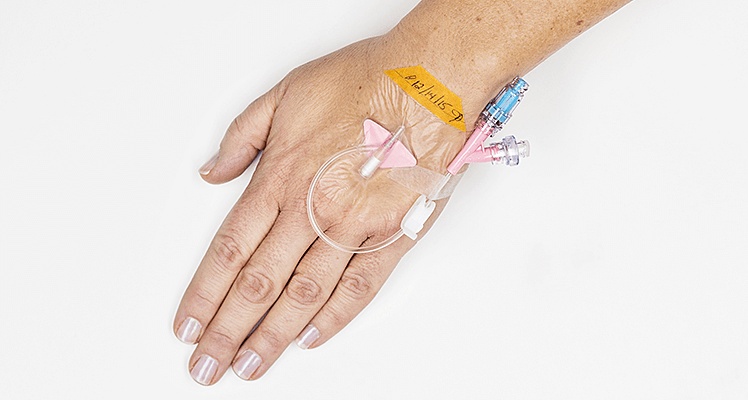OVERVIEW
While a simple technique, placing an intravenous line (IV) is a skill that many health professionals may not possess. It is an important foundational technical skill to be proficient in, and a guide on this procedure is laid out below.

EQUIPMENT NEEDED
Perhaps one of the first things to do before beginning to place the line is to gather all the equipment that will be necessary for its placement. Many different types of equipment exist for the placement of an IV line, however here is one example of a set of equipment that is commonly used for this purpose.
IV Start Kit With Antiseptic/Alcohol (Example Here)
IV start kits can be helpful and contain a few of the essentials that are needed to place an IV line:
- Tourniquet to distend veins: these will help visualize veins more easily
- Something to clean the area before beginning: alcohol or chloroprep swabs are common
- Gauze sponges/tape: can be made into temporary dressings if needed (for sticks that cause bleeding/initial unsuccessful sticks)
- IV dressing/label: placed over venipuncture site and used to label the date the IV was placed.
IV Needle/Catheter (Example Here)
Many different types of IV needle/catheter sets exist. The right size (i.e. gauge) needle should be selected and the user should comfortable with how the needle/catheter work (i.e. how to take off the catheter from the needle and how to connect the catheter to tubing.
IV Tubing Compativle With IV Catheter (Item A1129 Here) And Saline Flush
This tubing will be connected to the saline flush and will be connected to the IV catheter once the stick is successfully made. It prevents excessive bleeding and will also be used to test the placement of the IV
Extra Gauze
This can always be useful if there is more blood loss then anticipated.
GENERAL STEPS
Here are the general steps to take when placing an IV:
- Identify your target vein (either by eye or ultrasound) if possible early on (this will help you decide in part what size IV catcher you want to place)
- Gather your supplies (equipment described above) and select right gauge IV needle/catheter
- Apply tourniquet and have patient put their arm in a dependent position (and clench fist a couple of times).
- Set out gauze and dressings
- Connect tubing to saline flush and push out air and some saline from syringe (keep this in easy reach once you make your stick).
- Identify target vessel
- Prep area with alcohol/chloroprep
- Stick vessel with IV needle/catheter (bevel up, flat angle) and wait to see flash of venous blood.
- Advance catheter over needle into the punctured vessel. Put away your sharp needle safely.
- Connect IV tubing with saline flush to the IV catheter that is now intravascular.
- Aspirate with the flush to make sure venous blood is returned, flush the line with a little saline
- Apply dressing to venipuncture site and date the placement of the IV tube
- Disconnect the other side of the tubing from the saline flush, and either cap it or connect to an IV pump etc.
Page Updated: 03.07.2018